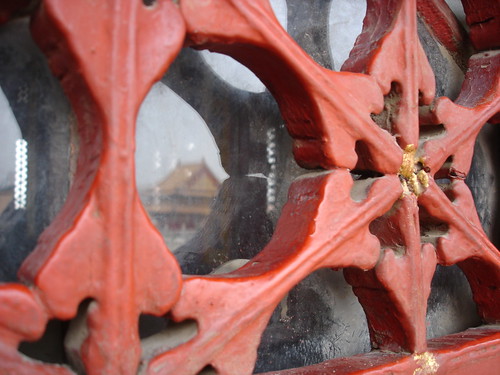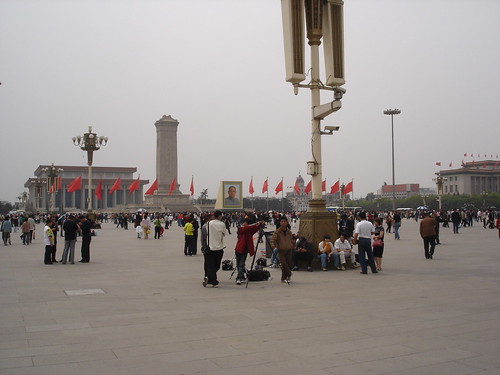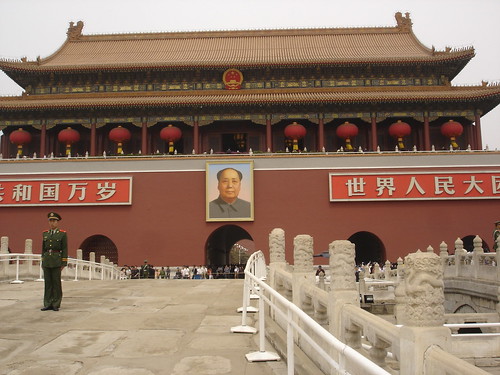
Smoky. That was the forecast on the Weather Channel website for Beijing when Kim and I woke up Saturday morning and began planning the day. It seemed more ominous a forecast than any I'd ever heard for our second day in China's capital.

Tiananment Square
Our hotel, the Grand Hyatt, was about 4 Beijing blocks (8 or more normal city blocks) from the Tiananmen Square area of Beijing that was made so famous by protestors. It was an easy walk, and while busy, wasn't as overwhelmed with people as I expected. The International Herald Tribune reported that 3000 local tourists got lost or became "missing persons" (70% being adults) in Tiananmen on Saturday when we were exploring.
Seeing the square across one of Beijing's broad and crowded streets, we entered one of the underground pedestrian crossings which were divided for directional flow and monitored with military officers. As we entered the square, the drone of a loud speaker quickly became more clear. From the IHT article, I now know that it was broadcasting the names of people who were separated from their groups, a fact that would have been more discomforting for me if I'd known it then. At the time, I found the square to be somehow less notorious than I'd imagined. Perhaps the whitewash of time and my memory has diluted the blood that was spilled that day.

A guard stands outside of the entrance to the Forbidden City.
With Mao's mausoleum sitting off-center in the Square but still balancing the Grand Palace, T. Square had echoes of the Mall in DC with it's open center surrounded by important governmental and museum buildings, but the Tiananmen was much less green and certainly more orderly than the Mall. As I just alluded to, Tiananmen Square sits quietly besides Beijing's Grand Palace, a remnant of past non-utilitarian dynasties that has been transformed like the modern Chinese economy into something uniquely Communistic and non-Communistic at the same time. With the Grand Palace (really the complex that is the Grand Palace) on the north, Tiananmen Square on the south, and many stately buildings (like a museum and the location where the congress of the Communist Party meets) on all sides, Tiananmen Square is the heart of Beijing and seemingly the heard of China.
No comments:
Post a Comment